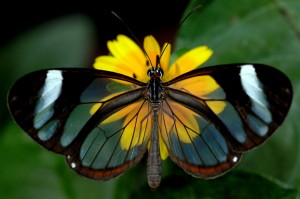Biodiversity is a simple and beautiful concept. It’s exactly what it sounds like. Biodiversity equates to variety among living things.

The more living things there are somewhere, the more biodiverse it is. Biodiversity is what makes coral reefs more interesting than open ocean. Among a variety of uses, biodiversity is an indicator for how robust an ecosystem is, how much evolution is occurring in a group of organisms, or how many services an ecosystem can provide.
Usually, the “living things” in biodiversity are “species”. Species are a fundamental unit of biodiversity. Without this unit we lose the ability to describe most kinds of biodiversity.
Species are a fundamental unit of biodiversity.
Units of course are important to our society in general. Without units, life would be chaos. Just ask Sally Second or Michael Meter. For example, how would you give driving directions without units? Drive 34 on Clinton place and make a left. Depending upon if I mean 34 miles, kilometers, minutes, or feet will entirely change how you interpret this statement. In fact, leaving the units out of these directions makes them complete non-sense.
Units standardize our way of thinking about stuff. There’s a reason why the word “unit” is only one letter away from “unite”. Units unite knowledge by being a standard method of comparison.
Let’s say we want to measure cobs of corn. That’s a silly thing to measure so it’s as good as anything else. If Mary in Oklahoma, Marisol in South Caroline and Rahul in Turkey and KKliktub on Andromeda 3 are all measuring corn they can compare their measurements if they use some kind of known unit. Even if the units are different we can convert between them.
This is pretty easy with physical properties: space, time, temperature, magnetism etc. The biological world is much more complex than the physical world, so our units tend to be messier. I will fight any physicist who says differently.
If we want to measure biodiversity we need units. A gentleman named Carl Linnaeus came up with a system for dividing up biodiversity into named groups. We can consider these named groups as units of biodiversity.
The problem was that the system of units he came up with was entirely arbitrary. A phylum (one of his units) is easy to explain to someone because they sort large groups that are easily recognizable, and can be differentiated based on a few obvious traits. But we only know what a phylum is because Carl told us what they are. They are not independently derivable and that’s because they are not based on actual patterns. I discuss more about this in another blog in the context of explaining what cockroaches are.
There is one exception. His most basic unit, the species, is independently derivable. That means without any prior knowledge of Linneaus’ system you could derive the unit of species. That’s because there are somewhat consistent biological traits that differentiate species from each other.
Given this, the species units seems like the best possible unit of biodiversity. This may be true, but it doesn’t mean that species is a perfect unit.
One of my first publications was about how our perceptions of biodiversity vary depending upon how we decide to define species. Depending upon if we defined species using how they look (morphology) or using their genetic information we appeared to gain or lose 25% of the total biodiversity1.
This is important to consider because there are more than two ways we can define species. In fact…
…the idea of species is one of the most controversial topics in all of biology.
Works cited:
1. Evangelista DA, Bourne G, Ware JL (2014) Species richness estimates of Blattodea s.s. (Insecta:
Dictyoptera) from northern Guyana vary depending upon methods of species delimitation.
Systematic Entomology 39: 150–158. doi: 10.1111/syen.12043
Dominic Evangelista is a PhD candidate studying the biodiversity and systematics of the cockroaches of the Guiana Shield. Follow him on twitter @Roach_Brain or ask him a question about cockroaches!


